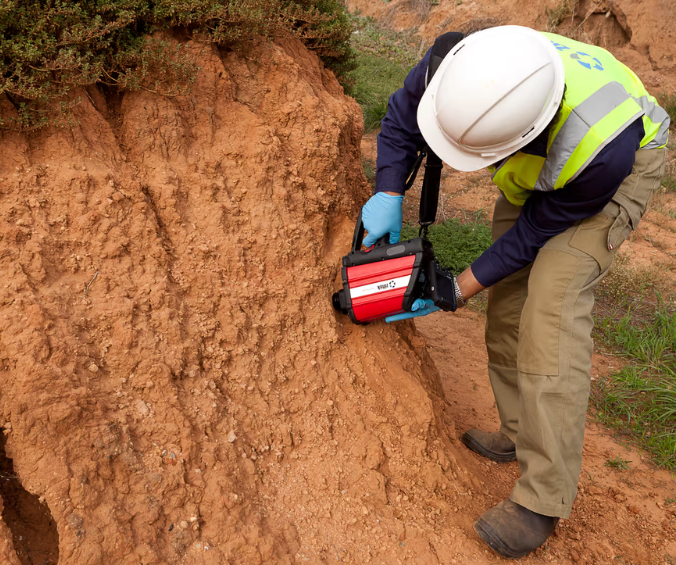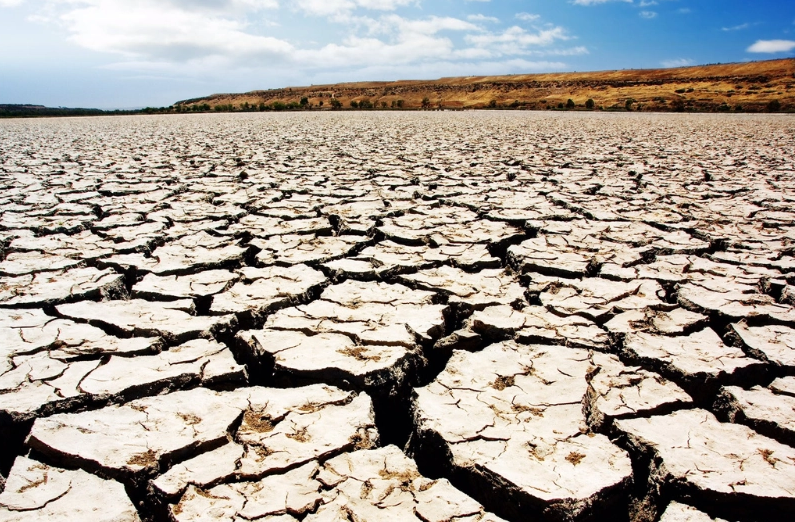It has mostly round particles and is thin, flat and covered with small plates. Of course, the application of this type of soil in construction can be in the form of mortar; Because it has good compressibility and becomes very resistant after drying.
Silt or mud
This soil is similar to clay, but its particles are smaller. This type of soil in construction can hold a lot of water for a long time and expands and contracts like clay. Silt is easier to work with than other types. But this type of soil is not suitable for construction and especially for foundation. Silt has poor drainage and causes soil expansion. When this happens, it can put pressure on the foundations and weaken them over time.
loamy soil
This soil is a combination of silt, sand and clay. This dark and dry soil can absorb water at a more balanced rate and dry out. Such conditions have made this soil one of the best choices for the construction industry. The expansion and contraction of this soil in construction is much less than clay; As a result, this situation puts less stress on the foundation. Loamy soil has good drainage, it is easy to work with, and depending on its composition, it can be sandy loam, clay or silty loam.
Sand soil
Sand particles are larger than clay and silt; As a result, the water in this type of soil drains faster and prevents the problems of expansion, contraction and displacement of the soil. Before constructing a building on sand, most contractors prefer to compact the soil to ensure the maximum stability of the structure. This soil is widely used in construction and:
It consists of rock fragments and hard minerals such as silicon dioxide. The size of sand particles is large, which improves drainage in compacted soils and increases soil aeration.
It comes from the decomposition of stones such as granite, quartz and limestone and is mainly suitable for use in building foundations.
Some sources, including the standards of the United States Occupational Safety and Health Administration (OSHA: Occupational Safety and Health Administration), have classified the types of soil in construction into the following four general groups.
Stone soil: It is one of the most stable types of soil and is mainly used in large structures and buildings that require more weight bearing and long-term stability.
Type A:
This soil includes types of clay and silt. Most structures built on this type of soil do not cause sliding or damaging expansion. But they may become unstable when exposed to humidity changes.
Type B:
Type B soil includes sandy loam, silt and medium clays. If working with this type of soil, you should take extra precautions to avoid the effects of soil instability and environmental conditions.
Type C:
Type C soils are the least stable and may cause structural failures. Working with this type of soil in construction without providing specialized structural protections in the foundation and surrounding soil can be dangerous.

Types of clay in construction::
This soil has many uses in construction; Especially in the fields of:
-Production of bricks, pottery and ceramics
-Clay concrete
-Infrastructure layering
-Road construction layering and
-Clay floors
-In general, the types of clay in construction are:
Natural clay:
This soil is formed from the accumulation of clay particles in nature. Natural clay has good plasticity and elasticity.
Chemical clay:
This type of soil in construction is obtained by adding chemicals to natural soil. This process changes the properties of the clay and can add some features necessary for construction.
Processed clay:
This type of clay is produced through processing processes such as drying, grinding, etc.
Advantages of clay in construction::
Clay in construction has the following advantages:
Structural stability:
Clay, with suitable mechanical properties, guarantees the stability of the structure and resists soil movements and humidity changes.
Load carrying capacity:
Clay has a high load carrying capacity due to its sticky and crumbly particles and is useful in buildings with heavy loads.
Pressure resistance:
Clay, due to its small and sticky particles, has a high resistance to pressure forces.
Water-resistant:
clay has a good resistance to water penetration through water absorption and having an elastic structure.
Adaptability:
Clay, due to its plastic properties and high adhesion, is easily formed in construction processes.
However, it should be noted that the use of clay may also be associated with challenges and problems. Therefore, in any construction project, it is necessary to consult with expert engineers and consider the appropriate methods and standards for using clay.
Soil erosion and its factors::
Soil erosion is the destruction and removal of particles from the soil surface, which can lead to serious problems in construction. Therefore, you should pay attention to soil erosion mechanisms in building design. Proper alignment, design of drainage systems, stabilization and strengthening of the pit through methods such as nailing or nailing and using suitable construction materials can help prevent this complication. When faced with soil erosion, measures can be taken to improve it, but the remedy before it occurs will be much more important. For example, if pit stabilization methods such as nailing or nailing are used as the most basic measures to start the structure, the percentage of safety and bearing capacity of the soil will increase significantly. In any case, some factors that can cause soil erosion in construction are as follows:
Moisture:
Heavy rains, water leaks in the building, water penetration into the soil and changes in the underground water level can cause soil erosion.
Wind:
Wind can separate soil particles from the soil surface and cause its erosion. Strong and continuous winds can remove soil from the ground and weaken foundations and building structures.
Slope of the land:
The slope of the land can cause the movement of soil particles, landslides and water flow.
Human activities:
Activities such as digging and transportation of building materials can lead to soil erosion. Holes created in the soil for the purpose of carrying out construction works or installing facilities can cause the destruction of the soil structure.

Conclusion::
Soil is a critical component in construction and having sufficient technical knowledge about soil stabilization and moisture behavior is very important for the successful implementation of construction projects. Compaction, chemical modification, deep excavation, lateral containment, and soil stabilization are methods of strengthening loose soils in construction that can directly affect the structural integrity and safety of buildings. Therefore, when building any new structure, it is necessary to get help from relevant experts in the field of soil evaluation and its characteristics. Soil testing can provide you with valuable information about its resistance and prevent future unpleasant consequences